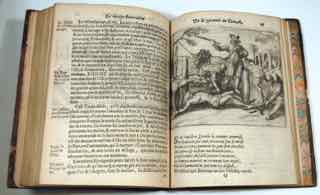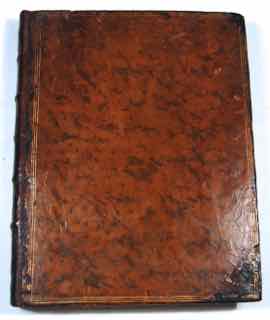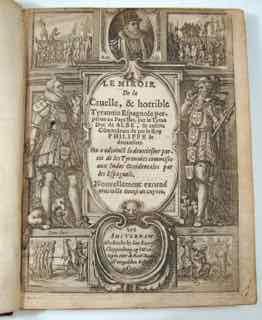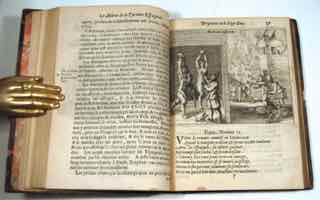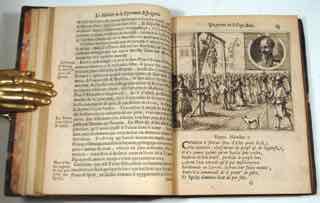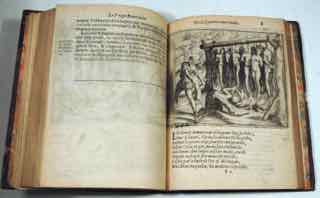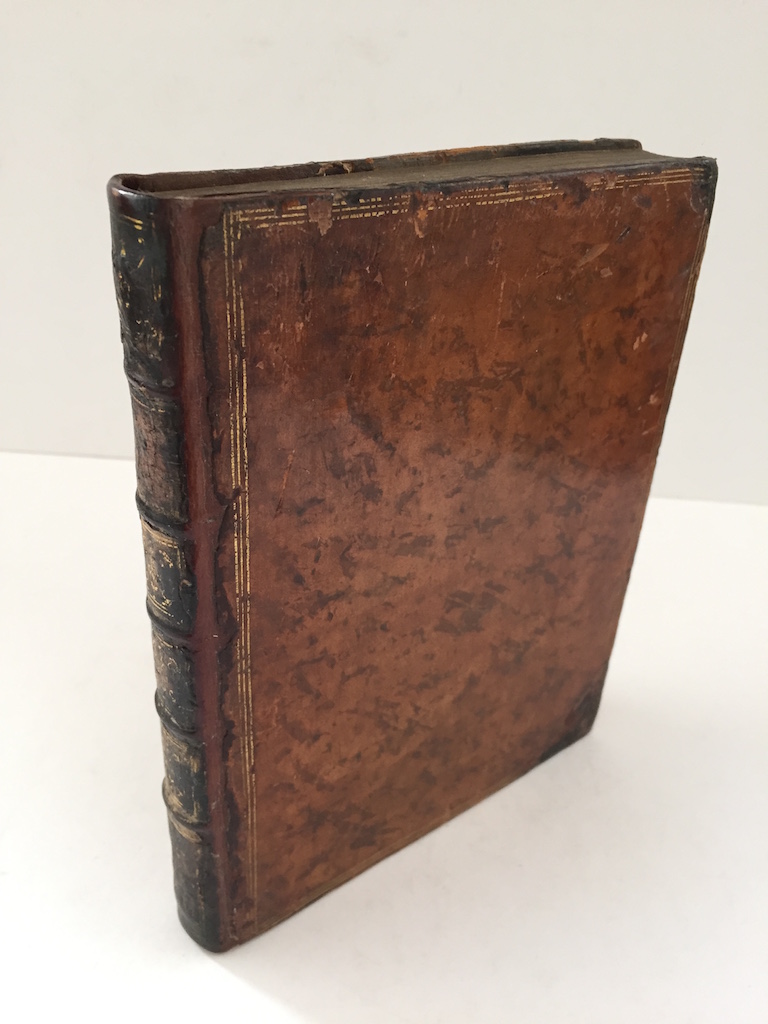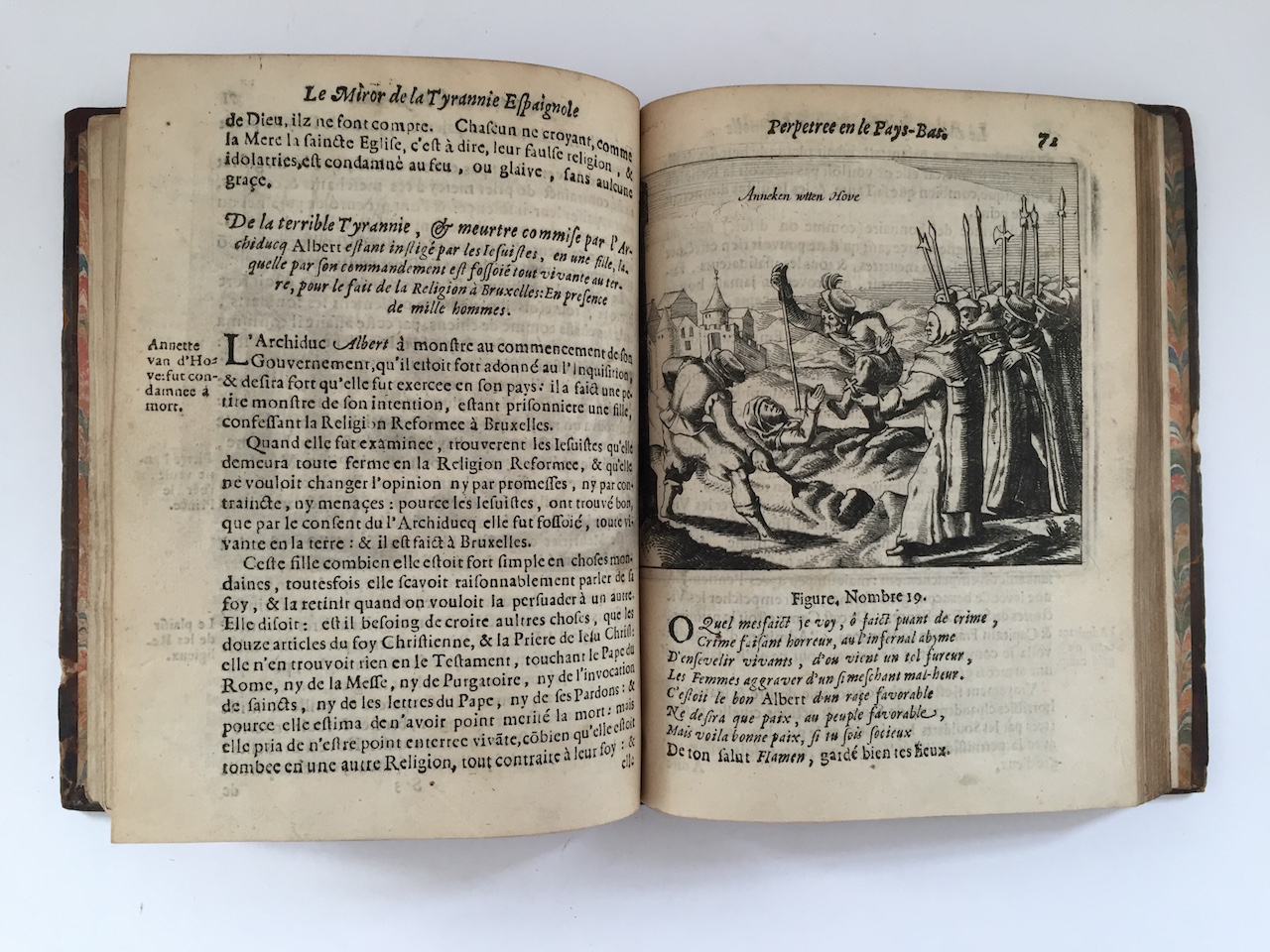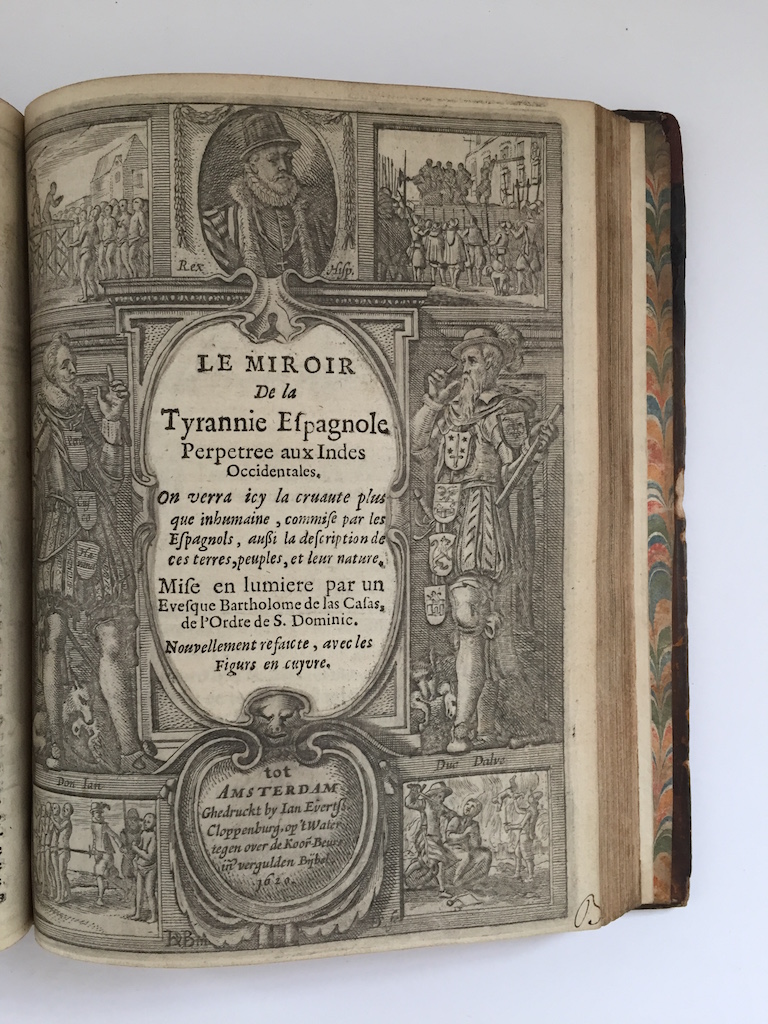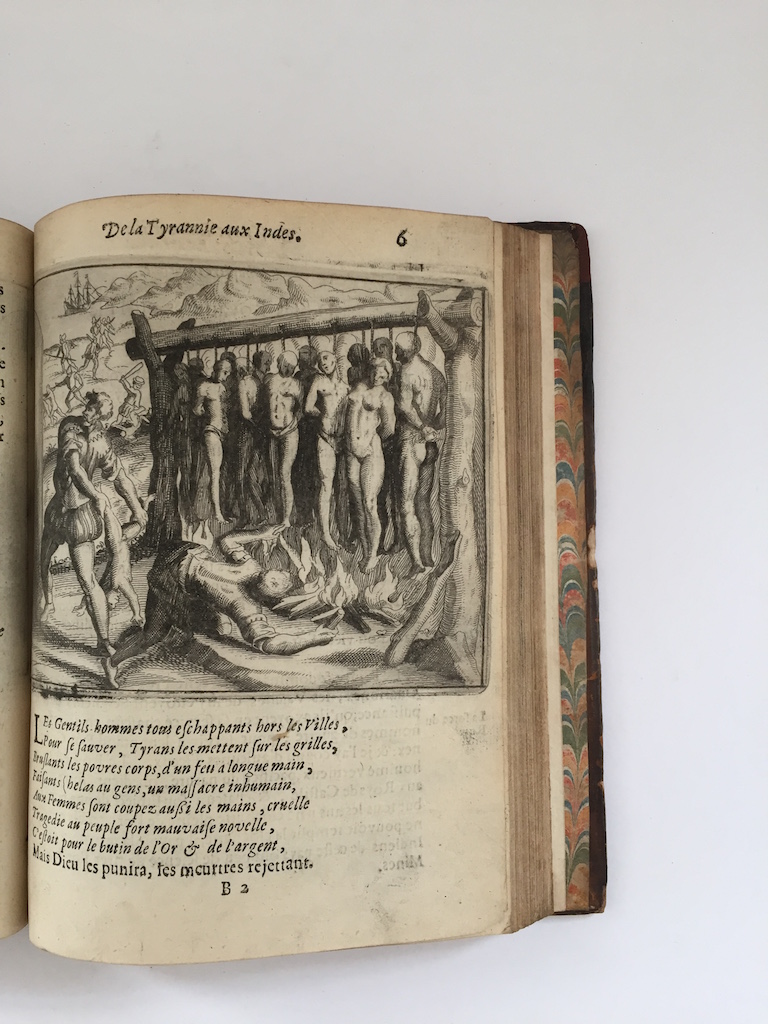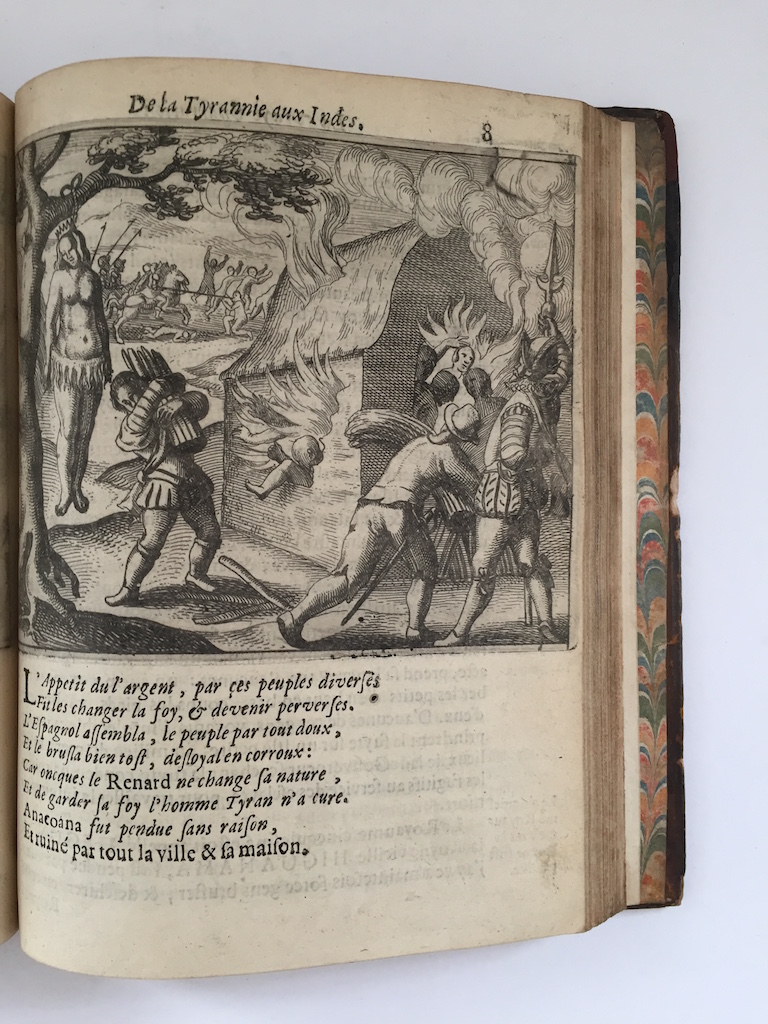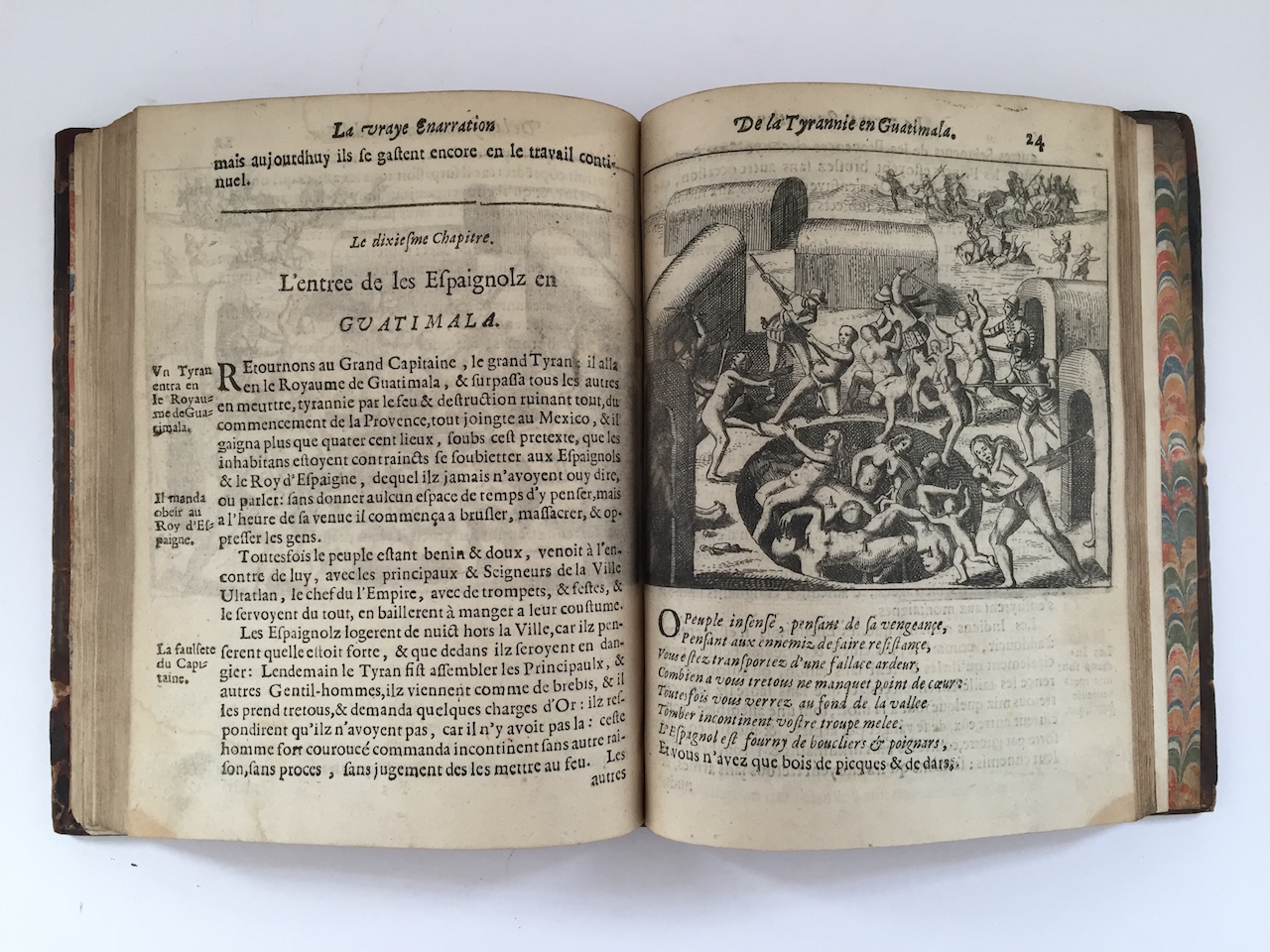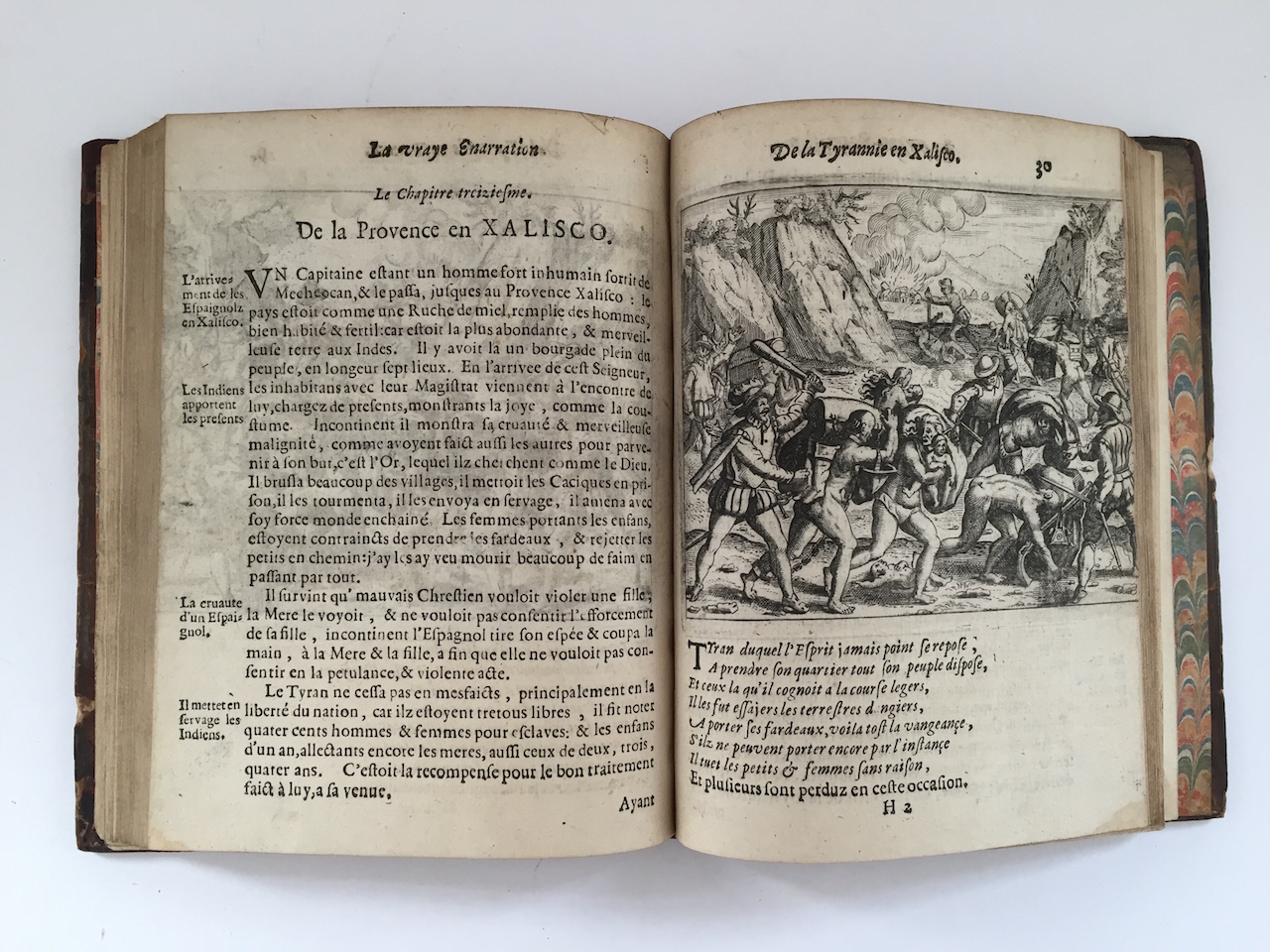GYSIUS, Johannes and LAS CASAS, Bartolomé
Le miroir de la cruelle, & horrible tyrannie espagnole perpetree au Pays Bas
Amsterdam, ghedruckt by Ian Evertss. Cloppenburg, op᾽t Water tegen over de Koor[n]-Beurs in [de] vergulden Bijbel., 1620£4,850.00
FIRST EDITION thus. 4to. Two parts in one vol. ff. [iv], 87 [i.e. 88] ; ff. 68. (:) A-Y ; A-R . Roman letter. Both titles with fine historiated engraved borders signed DVB [David Vinckeboons] in[cidit], DEL [Dirck Eversen Lons] fe[cit], scenes of torture and executions at corners, Philip above the Archdukes of the Netherlands at sides 37 half page engravings in text, floriated woodcut initials. Light age yellowing, occasional minor marginal waterstain or spot, a little ink offsetting from the engravings, very outer upper corner of first title with small repair, first t-p just trimmed to plate mark. A very good copy with good impression of the engravings, in slightly later speckled calf, covers bordered with a triple gilt rule, spine with raised bands gilt ruled in compartments central fleurons gilt, expertly re-backed with original spine laid down, corners restored, all edges gilt.
First edition of the of these two important works published in the Netherlands in 1620, containing French translations of two earlier works detailing Spanish crimes and atrocities in both Europe and the New World. The first part is an abridged version of ‘Oorsprong en voortgang der Nederlandtscher beroerten’ (Origin and progress of the disturbances in the Netherlands) by Johannes Gysius (died 1652), first published anonymously in 1616. The second part is a translation of Brevísima relación de la destrucción de las Indias (A short account of the destruction of the Indies), written by Bartolomé de las Casas (1474–1566) in 1542 and first published in 1552. These histories were published together under a new title by Jan Evertszoon Cloppenburch (1571–1648), an Amsterdam bookbinder and publisher of Bibles and patriotic and religious books and tracts associated with the Dutch Reformed Church. Gysius was a minister, whose book is a history of the Dutch revolt against Spain in 1555–98, containing accounts of such events as the sieges of Haarlem, Leiden, and other cities and the execution by the Spanish of Count Egmont in Brussels in 1568.
“Las Casas was reprinted in 1620 and 1630. The first of these editions appeared in Amsterdam without any prefatory matter not even the author’s .. relying largely on copperplates to tell a pictoral story of torture and cruelty on the title page and throughout the text. The publisher, Jan Evertz Cloppenburg, presented a typology of Spanish cruelty. He included two title pages set up in identical ways with the same pictures . The first,..was on the Low countries and the second was about the new World and preceded Las Casas’s account. The first title page included writing surrounded by pictures of men, women and children being tortured. Philip of Spain presided at the top and centre above the title, his vassals “Don Jan” and the “Duke of Alva” are shown facing the title: the Spanish cruelty in the Netherlands was mirroring that in the New World. .. This symbolic correspondence was a central typology of the Old World and New. Cloppenburg was asking the readers to see the Old World through the New. .. Here the publisher says that the Spaniards brought war and tyranny to the Low countries under the same religious pretext that they used to tyrannise the Natives in the New World a hundred years before. The heretics and the Lutherans in the Netherlands had taken the place of the pagans an Idolaters of the New World. .. In some of the engravings in Cloppenburg’s edition, the inhabitants of the Netherlands are naked like the Natives. The translation, which is from the dutch, sometimes elaborates beyond Las Casas’s original to make the Spaniards seem even crueler. The engravings of the Flemmish artist Theodore de Bry, which had been in the Frankfurt Latin edition of Las Casas in 1598, constituted part of this edition, where they reinforced visually the worst atrocities in the text.” Jonathan Hart ‘Literature, Theory, History.’
A good copy of this important reinterpretation both these works.
Simoni BM STC Low Countries 1601-1621 p. 255 G197. Alden 620/37 and 620/74; Sabin 11270. Palau 172663, 46962.In stock


